Volume 23, Issue 2
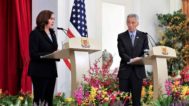
Regional Overview
May — August 2021Europe “Discovers” Asia and Washington “Discovers” SEA, Amid Afghan Anxiety
Joe Biden pledged that the US would resume its traditional role as leader of US alliances, supporter of multilateralism, and champion of international law and institutions. Throughout its first nine months, his administration has labored to turn those words into reality, and for the first six months the focus was on Asia, at least Northeast Asia. During this reporting period, Biden himself worked on multilateral initiatives and while the primary venues were Atlanticist–the G7 summit, NATO, and the European Union–Asia figured prominently in those discussions. Chinese behavior loomed large in European discussions as NATO allies conducted ship visits and military exercises in the region to underscore these concerns. Meanwhile, a number of senior US foreign policy and security officials visited Asia, and Southeast Asia in particular, amidst complaints of neglect from Washington. Concerns about Chinese pressure against Taiwan also grew in the region and beyond. The impact of the US withdrawal from Afghanistan, messy as it appeared to be, has thus far not resulted in a crisis of confidence regarding US commitment to the region.
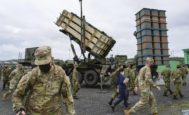
US - Japan
May — August 2021Summer Takes an Unexpected Turn
By the end of spring, the US-Japan relationship was centerstage in the Biden administration’s Indo-Pacific diplomacy. From the first Quad (virtual) Summit to the visit of Prime Minister Suga Yoshihide to Washington, DC, relations between Tokyo and Washington could not have been better. A full calendar of follow-up meetings for the fall suggested even further deepening of the partnership. And on Aug. 20, President Joe Biden announced that he intended to nominate Rahm Emanuel, former mayor of Chicago and chief of staff for President Obama, as ambassador to Japan. Throughout the summer, the US and Japan continued to deepen and expand the global coalition for Indo-Pacific cooperation. The UK, France, and even Germany crafted their own Indo-Pacific visions, as did the EU. Maritime cooperation grew as more navies joined in regional exercises. Taiwan featured prominently in US-Japan diplomacy, and in May the G7 echoed US-Japan concerns about rising tensions across the Taiwan Straits. Japanese political leaders also spoke out on the need for Japan to be ready to support the US in case tensions rose to the level of military conflict.
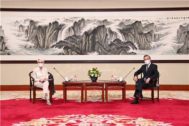
US - China
May — August 2021The Descent Continues
The downward slide in US-China relations continued as the two countries wrangled over Hong Kong, COVID-19, Taiwan, the South China Sea, Xinjiang, and cyberattacks. US Deputy Secretary of State Wendy Sherman and Chinese officials met in Tianjin but appeared to make no progress toward managing intensifying competition between the two countries. The US rolled out a series of measures against alleged Chinese forced labor practices and strengthened the prohibition against US investments in the PRC’s military industrial complex. Deteriorating freedoms in Hong Kong prompted the Biden administration to impose more sanctions on Chinese officials and issue a business advisory warning US companies of growing risks to their activities in Hong Kong.
Beijing retaliated by imposing sanctions on US citizens under its new Anti-Foreign Sanctions Law. In close coordination with its European allies, the US condemned the PRC’s use of criminal contract hackers to conduct unsanctioned cyber operations around the world, including attacks on Microsoft’s Exchange Server in March 2021. Chinese and US officials in charge of trade and economic relations held virtual meetings, but tariffs imposed by both sides during the Trump administration remained in place. Biden officials maintained that they are conducting “a robust, strategic review” of the US economic relationship with China. As the Taliban assumed control in Afghanistan, US and Chinese officials exchanged views, but the prospects for coordination and cooperation appeared dim.
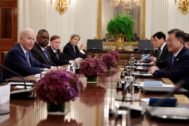
US - Korea
May — August 2021Stir Not Murky Waters
US relations with both South and North Korea were—with a few notable exceptions—uneventful during the May-August 2021 reporting period. If US-Korea relations displayed some excitement, it was largely along the Washington-Seoul axis. An inaugural leader summit between Presidents Joe Biden and Moon Jae-in took place in Washington, producing significant deliverables for the short, medium, and long term. Biden and Moon then participated in the June G7 summit in Great Britain. The US withdrawal from Afghanistan in August also provided South Korea with challenges and ponderables. Washington-Pyongyang communication was subdued, aside from standard North Korean criticism of US-South Korea joint military exercises. Even when the US and North Korea addressed each other with respect to dialogue, it was usually to underline for the other party how Washington or Pyongyang is willing to talk under the right circumstances, but capable of waiting out the other side. Late August added some spice, however, as the IAEA issued a credible report confirming what many had expected: North Korea has likely re-started fissile material production at the Yongbyon complex. Finally, outside the reporting period, Pyongyang tested a potentially nuclear-capable land-attack cruise missile on Sept. 11. Are these signs that sleeping dogs are stirring?

US - Southeast Asia
May — August 2021Washington Finds Its Feet in Southeast Asia
In the months immediately following Joe Biden’s inauguration, Southeast Asia was on the backburner in US foreign policy, but in May the administration heeded calls for a stronger voice and more active role in the region with a succession of visits by high-level officials, culminating in Kamala Harris’s first trip to the region in her role as vice president. The cumulative impact remains to be seen, but one key “deliverable”—the renewal of the US-Philippines Visiting Forces Agreement (VFA) during Secretary of Defense Lloyd Austin’s visit to Manila—was enough to label the summer strategy a success. More broadly, the administration responded to the surge of the COVID Delta variant in Southeast Asia with donations of vaccines, making considerable strides in the “vaccine race” with China and Russia.
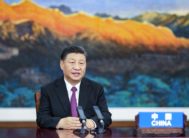
China - Southeast Asia
May — August 2021Pushing Regional Advantages Amid Heightened US Rivalry
China’s recognition of the strategic challenge posed by close Biden administration relations with the Quadrilateral Security Dialogue (Quad) powers Australia, India, and Japan reinforced Beijing’s strong efforts to preserve and expand its advantageous position in Southeast Asia in the face of rising competition with the United States. Beijing used uniformly critical coverage of US withdrawal from Afghanistan to highlight US unreliability, and attempted to discredit Vice President Kamala Harris’ Aug. 22-26 visit to the region, the highpoint of Biden government engagement with Southeast Asia. It also widely publicized evidence of China’s influence in the competition with the United States in Southeast Asia, even among governments long wary of China, like Vietnam. That effort underlined the lengths Vietnam would go to avoid offending China in reporting that Hanoi allowed the Chinese ambassador to publicly meet the Vietnamese prime minister and donate vaccines, upstaging Vice President Harris, who hours later began her visit and offered vaccines.

China - Taiwan
May — August 2021Cross-Strait Tension Increasing Beneath a Surface Calm
Cross-Strait tensions intensified between May and August 2021, despite the superficial calm that generally prevailed after the dramatic confrontations earlier in the year. China again blocked Taiwan’s participation at the World Health Assembly (WHA), and Xi Jinping reaffirmed the Communist Party’s commitment to the peaceful reunification of Taiwan at the Party’s 100th anniversary. Chinese military flights into Taiwan’s Air Defense Identification Zone were almost routine until China launched 28 sorties in a single day to protest the G7 summit’s endorsement of Taiwan’s participation in the WHA. The Biden administration announced its first arms sales to Taiwan. Several countries, most notably Japan and Australia, made their strongest statements ever in support of Taiwan. Lithuania announced it would permit the opening of an unofficial “Taiwanese” representative office. Beijing withdrew its ambassador from Lithuania and told Lithuania to withdraw its ambassador from Beijing. The US dismissed fears that its withdrawal from Afghanistan might portend abandonment of Taiwan. In coming months, Taiwan faces three potential turning points: Taiwan’s opposition Nationalist Party will elect a new chair; a referendum could overturn the opening of Taiwan’s market to US pork; and the US has signaled it will invite Taiwan to President Biden’s democracy summit despite threats of military retaliation by China.
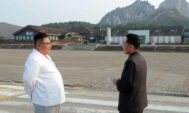
North Korea - South Korea
May — August 2021Summer False Dawn: On/Off Communications
Summer 2021 saw a false dawn on the Korean Peninsula, hardly the first, but surely one of the shortest. On July 27 both North and South announced the reconnection of inter-Korean hotlines, severed for over a year. In Seoul, hopes were high—aren’t they always?—that this signaled a fresh willingness by Pyongyang to engage, not only with South Korea but also the US. Yet this “breakthrough” lasted barely a fortnight. When the US and ROK began their regular August military exercises—albeit scaled back and wholly computer-based—North Korea snarled and stopped answering the phone. Inter-Korean relations remain frozen, as they have been ever since early 2019. With Moon Jae-in’s presidency due to end next May, any real melting of the ice looks increasingly like a challenge for his successor.

China - Korea
May — August 2021Alliance Restoration and Summit Commemorations
South Korea President Moon Jae-in’s meeting with Joe Biden and his participation in the G7 summit during May and June focused attention on Seoul’s strategy of balancing relations with China and the United States. While Beijing disapproved of the US-ROK joint statement released after the May summit, Chinese state media praised the Moon administration’s relative restraint in joining US-led coalition-building against China. Official remarks on core political and security issues, however, raised mutual accusations of interference in internal affairs. US-China competition and South Korean domestic political debates amplify Seoul’s dilemma regarding its strategic alignment ahead of the country’s 2022 presidential elections.
The China-North Korea relationship turned to commemorative diplomacy regarding summit meetings between Kim Jong Un and Xi Jinping in 2018 and 2019 in the absence of new meetings in 2021. Kim offered hearty congratulations to Xi on the occasion of the 100th anniversary of the founding of the Chinese Communist Party and both sides affirmed the value and historic contributions of the Sino-DPRK Treaty of Friendship, Cooperation, and Mutual Assistance on the occasion of the 60th anniversary of the signing of the treaty in 1961. Political messages underscoring China-North Korean strategic alignment included a North Korean statement affirming shared strategic priorities regarding both the US military withdrawal from Afghanistan and Chinese statements criticizing the continuation of annual US-South Korean military exercises in the context of rising China-US strategic rivalry.

Japan - China
May — August 2021A Chilly Summer
China and Japan continued to vie over a wide variety of issues including economic competitiveness, jurisdiction over territorial waters, World War II responsibilities, representation in international organizations, and even Olympic and Paralympic medals. The Japanese government expressed concern with the increasingly obvious presence of Chinese ships and planes in and around areas under its jurisdiction, with Chinese sources accusing Japan of a Cold War mentality. Nothing was heard of Xi Jinping’s long-planned and often postponed official visit to Tokyo. Also, Chinese admonitions that Japan recognize that its best interests lay not with a declining United States but in joining forces with a rising China were conspicuous by their absence.
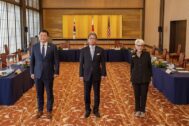
Japan - Korea
May — August 2021Unrealized Olympic Diplomacy
In the summer months of 2021, the big question for many observers was whether Prime Minister Suga Yoshihide and President Moon Jae-in would hold their first summit meeting during the Tokyo Olympic Games. Cautious hope was in the air, especially on the South Korean side. However, by the time the Olympics opened in late July, any such hope was dashed amid a series of unhelpful spats. Seoul and Tokyo decided that they would not gain much—at least not what they wanted from the other—by holding a summit this summer. With Suga’s announcement of his resignation as head of the Liberal Democratic Party (LDP) at the end of September, barring any sudden turn of events, his tenure as Japanese prime minister will be recorded as one that did not have a summit with a South Korean president.
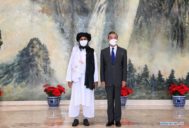
China - Russia
May — August 2021Afghan Endgame and Guns of August
The summer of 2021 may be the best and worst time for Russia-China relations. There was much to celebrate as the two powers moved into the third decade of stable and friendly relations, symbolized by the 20th anniversary of both the Shanghai Cooperation Organization (SCO) and the “friendship treaty” (The Treaty of Good-Neighborliness and Friendly Cooperation Between the People’s Republic of China and the Russian Federation). This historical moment, however, paralleled a hasty and chaotic end to the 20-year US interlude in Afghanistan with at least two unpleasant consequences for Beijing and Moscow: a war-torn Afghanistan in their backyard with an uncertain future and worse, a United States now ready to exclusively focus on the two large Eurasian powers 30 years after the end of the Cold War. As the Afghan endgame rapidly unfolded in August, both sides were conducting large exercises across and around Eurasia. While Afghanistan may not again serve as the “graveyard of empires” in the 21st century, the end of the US engagement there will usher in an era of competition, if not clashes, between rival empires.
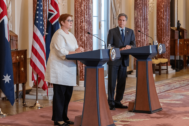
Australia-US/East Asia
September 2020 — August 2021COVID and China Chill, Alliance Anniversary and Afghanistan
Australia closed its borders to confront COVID-19 and rode out recession, while China shut off key markets to punish Australia. The short recession caused by pandemic ended Australia’s record run of nearly three decades of continuous economic growth; Beijing’s coercion crunched the optimism of three decades of economic enmeshment. However, Australia’s economy rebounded while the China crunch continues, causing Australia to question its status as the most China-dependent economy in the developed world. The Canberra-Beijing iciness has built over five years, marking the lowest period since the establishment of diplomatic relations in 1972. In 2021, the language of “strategic partnership” died and the “strategic economic dialogue” was suspended by China. The Biden administration promised not to abandon Australia, saying that US-China relations would not improve while an ally faced coercion. Australia embraced Washington’s assurance, along with the elevation of the Quad with the US, Japan, and India.